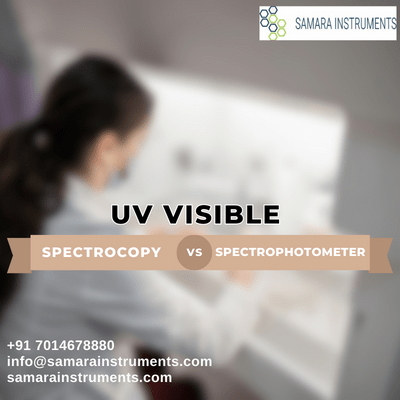Difference in UV-Visible Spectroscopy and UV-Visible Spectrophotometers

UV Visible Spectroscopy vs UV Visible Spectrophotometer UV visible spectroscopy is a powerful analytical technique that uses the absorption of ultraviolet (UV) and visible (Vis) light by molecules to gain insights into their structure, composition, and interactions. UV-visible spectrophotometers are the instruments used to measure this absorption. Understanding UV-Visible Spectroscopy When UV-visible light interacts with […]
UV-Visible Spectroscopy: Analyzing Light Absorption

UV Visible Spectroscopy Ultraviolet-visible (UV-Visible) spectroscopy emerges as a highly effective and indispensable analytical method, shedding light on the absorption characteristics of both ultraviolet (UV) and visible light across a diverse range of substances. This technique thrives upon the foundational premise that various chemical compounds exhibit distinct behaviors when absorbing specific wavelengths of light. This […]
Unveiling the Wonders of Visible Spectrophotometers

Visible Spectrophotometers: Applications and Advancements Visible spectrophotometers are powerful analytical instruments that measure the absorption and transmission of light in the visible range of the electromagnetic spectrum (approximately 380 nm to 750 nm). They are used in a wide variety of applications, including pharmaceutical analysis, environmental monitoring, biochemistry and life sciences research, food and beverage […]

